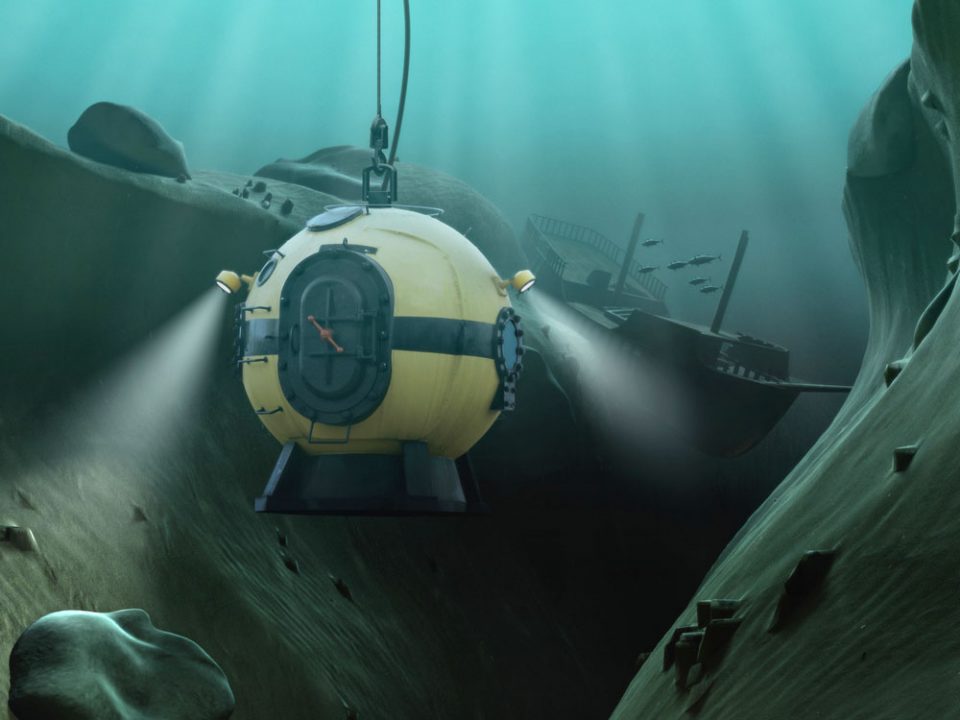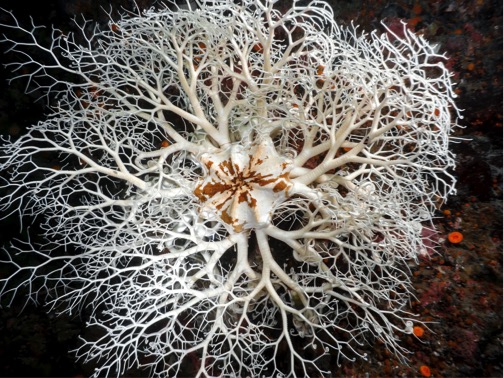
Discover the Creatures of the Deep!
More than 30,000 feet below sea level in the Pacific Ocean lies the Mariana Trench, home to a world of creatures especially adapted to its depths. From glowing jellyfish to starfish with hundreds of arms, these dark waters are filled with surprises!
Basket Star

This is not your typical starfish! The basket star is a special invertebrate (which means that it has no backbone) with an intricate web of arms. Every arm can grow up to three feet long and has tiny hooks to reel in food such as tiny mollusks and plankton. The basket star doesn’t have to worry about broken arms; it is able to regrow its limbs!
Dumbo Octopus
Named for its flapping ears that resemble Walt Disney’s beloved flying elephant, the Dumbo octopus slinks along the sea floor down to depths of 13,000 feet. It can use its ears to shoot itself upwards and its skirt-like arms to move in any direction. Most Dumbos choose to live in icy waters in total darkness to avoid large predators and human activity.
Deep-sea Hydromedusa
Hydromedusae are a type of small, glowing jellyfish with spidery-looking tentacles that were first spotted in the Mariana Trench in 2016. They create their own light through a process called bioluminescence, which gives them a glowing appearance.
Blobfish
While the blobfish isn’t the prettiest creature in the sea, it is certainly unique. Its jellylike skin allows it to float above the sea floor without using energy or swimming.
Goblin Shark
The spooky deep-sea goblin shark has a long snout covered with tiny, jelly-filled pores that can detect the weak electric fields created when a nearby prey animal’s muscles contract. When the shark finds something it wants to eat, it can swallow it whole!
Barreleye Fish
The strange barreleye fish has a see-through head! Its bright green, tube-shaped eyes are good for absorbing light as it swims through the dark depths of the ocean. The eyes move inside a clear membrane that covers the fish’s head like a shield to protect it.
Thanks for taking a dive into the deep end with us!
